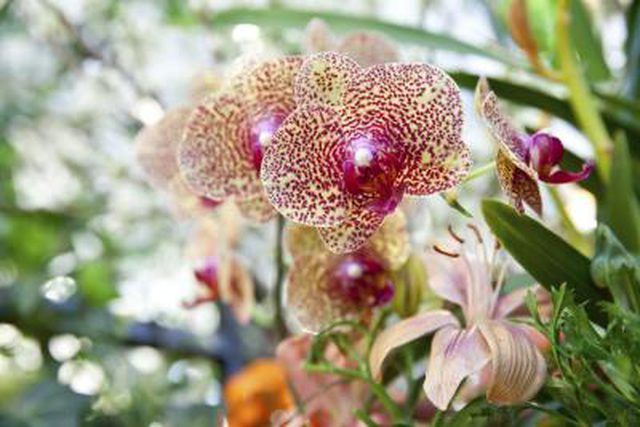Bulbs
Flower Basics
Flower Beds & Specialty Gardens
Flower Garden
Garden Furniture
Garden Gnomes
Garden Seeds
Garden Sheds
Garden Statues
Garden Tools & Supplies
Gardening Basics
Green & Organic
Groundcovers & Vines
Growing Annuals
Growing Basil
Growing Beans
Growing Berries
Growing Blueberries
Growing Cactus
Growing Corn
Growing Cotton
Growing Edibles
Growing Flowers
Growing Garlic
Growing Grapes
Growing Grass
Growing Herbs
Growing Jasmine
Growing Mint
Growing Mushrooms
Orchids
Growing Peanuts
Growing Perennials
Growing Plants
Growing Rosemary
Growing Roses
Growing Strawberries
Growing Sunflowers
Growing Thyme
Growing Tomatoes
Growing Tulips
Growing Vegetables
Herb Basics
Herb Garden
Indoor Growing
Landscaping Basics
Landscaping Patios
Landscaping Plants
Landscaping Shrubs
Landscaping Trees
Landscaping Walks & Pathways
Lawn Basics
Lawn Maintenance
Lawn Mowers
Lawn Ornaments
Lawn Planting
Lawn Tools
Outdoor Growing
Overall Landscape Planning
Pests, Weeds & Problems
Plant Basics
Rock Garden
Rose Garden
Shrubs
Soil
Specialty Gardens
Trees
Vegetable Garden
Yard Maintenance
How to Create Hybrid Plants
How to Create Hybrid Plants. Cross-pollination happens randomly when pollinators buzz from one plant to the next. It occurs intentionally when plant breeders make controlled crosses between specific plants. The offspring that result from seed produced by these unions are known as hybrid plants. Hybridizing isn't difficult, but the cross must be...

Cross-pollination happens randomly when pollinators buzz from one plant to the next. It occurs intentionally when plant breeders make controlled crosses between specific plants. The offspring that result from seed produced by these unions are known as hybrid plants. Hybridizing isn't difficult, but the cross must be controlled to ensure the seed you want. Whether you're cross-pollinating for the fun of it or planning an award-winning cultivar, follow nature's lead and you'll be a hybridizer.
Selecting the Parents
The first step in creating a hybrid plant is choosing two worthy parents. Select two species or varieties in the same genus that have characteristics worth augmenting and preserving. Plant breeders select parents with desirable or marketable traits they wish to pair with qualities only found in another variety. This might be a rose (Rosa spp.), hardy from U.S. Department of Agriculture plant hardiness zones 2 through 11, that defies disease during hot, humid summers or has exceptional cold hardiness, or teams striking color with compact size. Chose plants with traits you hope your hybrid will retain.
Preparing the Blooms
Watch for when your parent plants approach full bloom. Different plant genera have different flower types. They may have male and female reproductive organs in the same bloom, separate male and female flowers on the same plant, or male and female blooms on different plants. When your parent plants begin flowering, select blossoms that will open fully that day. Catch them early, before any pollen is released. Remove all the male parts around the female center to prevent the bloom from pollinating itself. Prepare several blossoms. Cover the exposed female flowers with fastened bags so no errant pollinators get in. Collect male stamens from your pollen parent to use for pollination, and then wait for the sign to move.
Making the Cross
Normally within a few hours, the knobby tip at the pistil's end -- called a stigma -- releases a sticky film that stimulates pollen to begin fertilization. That's your signal to pollinate the stigma with the male parent's pollen. It's important to apply your pollen at that time to ensure success. Use a small artist's brush to paint your collected pollen on the sticky stigma. When complete, cover the female parent again to prevent any further pollination. Leave the bag in place for several days as the time for cross-pollination passes. Label the plants with the seed parent's name first followed by an "x" and the name of the pollen parent, along with the date of your cross.
Handling the Seed
Wait patiently until the time comes to harvest your seed from the plant's seed-bearing fruit. In roses, that's rosehips. In other plants, they may come in seedpods or falling seeds. Protect the fruit and seeds from birds beforehand. Harvest the seeds as you would if you were saving seed to plant next year. That's exactly what you will do. Store the seed in envelopes or containers, and wait for spring to plant your seeds. Start your seeds indoors for the best possible beginning. As in humans, each cross produces distinct creations. The seedlings that germinate are hybrid plants.
Selecting Your Hybrid
Now begins the fun of watching your hybrids grow and seeing if the traits you wanted carried through. You already created hybrid plants, but the bigger task is knowing if they're worth keeping. It may be years in the garden before you observe that one seed developed disease resistance and kept a parent's luxuriant blooms -- or that the best of both disappeared and your hybrid belongs in the compost bin. Seeds from hybrids do not grow true to the plant. To replicate your hybrid, take a cutting and root it. This clone is an exact replica of the hybrid you've selected to cultivate. Every cutting taken from the original or its clones replicate your hybrid cultivar.